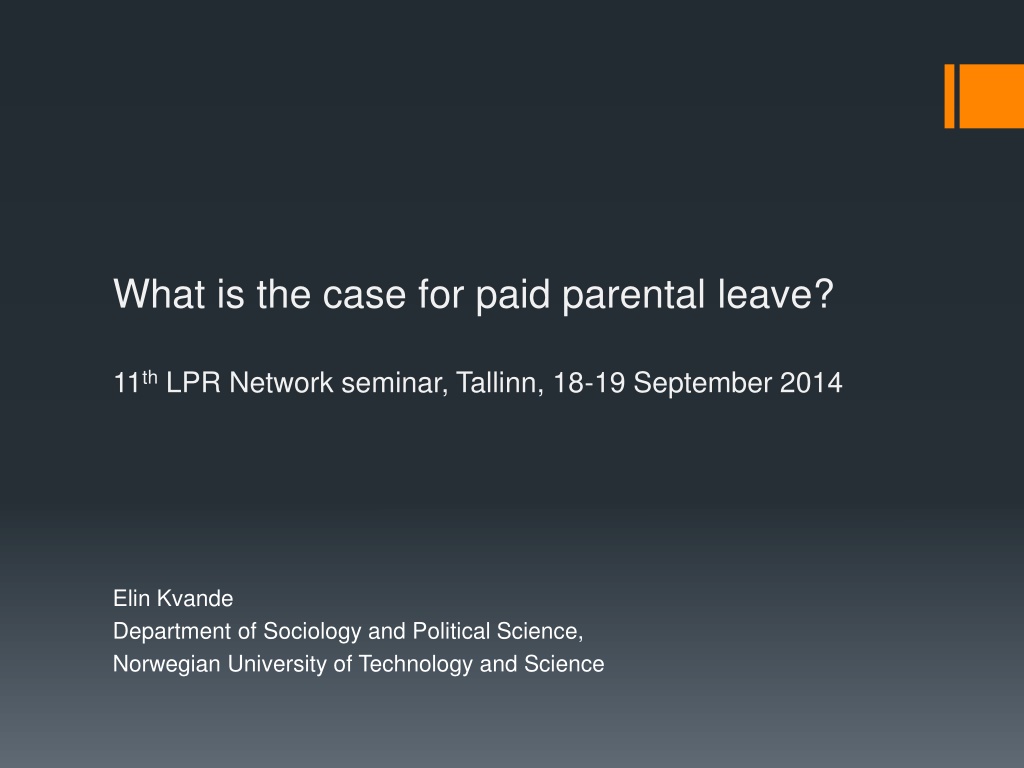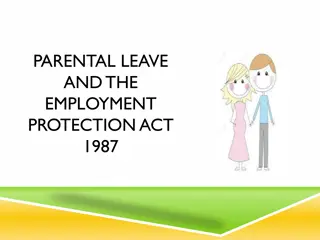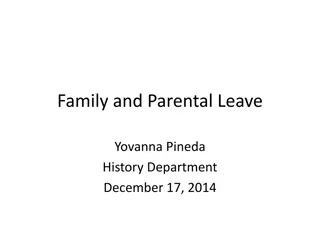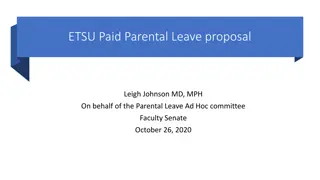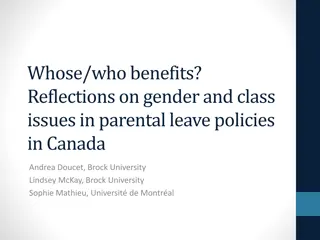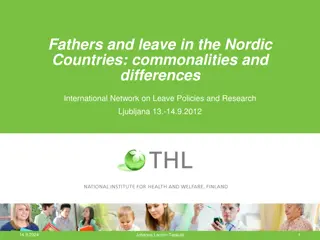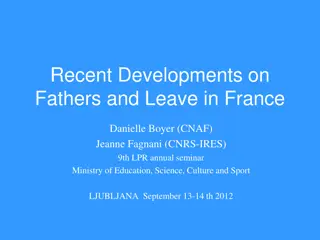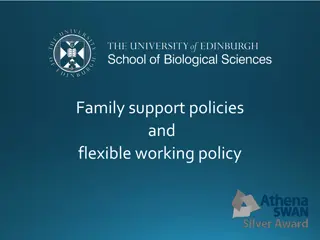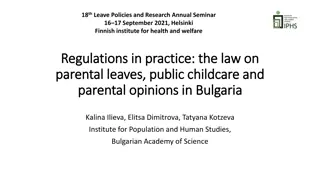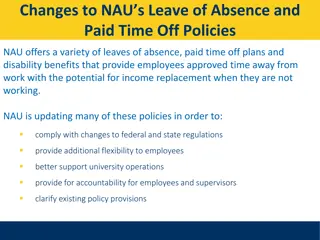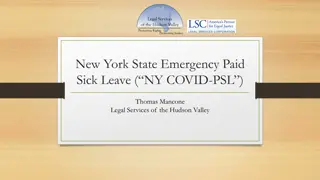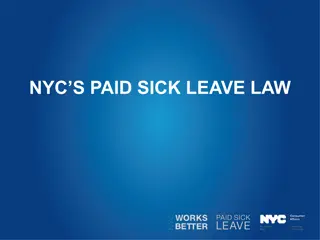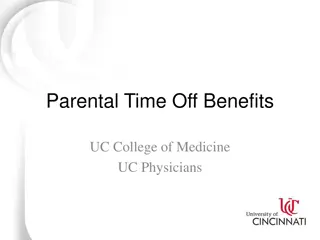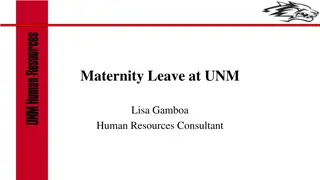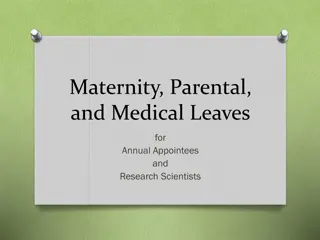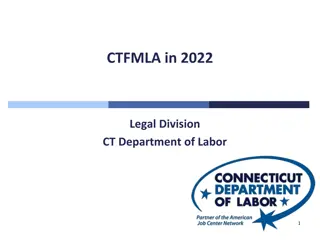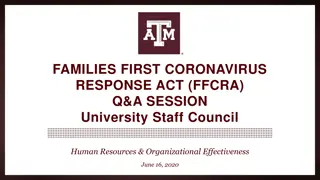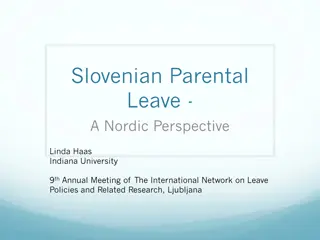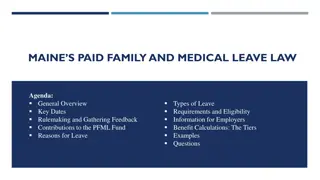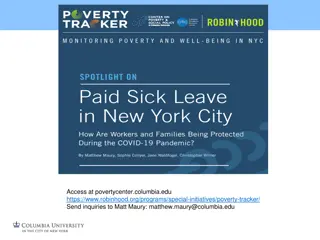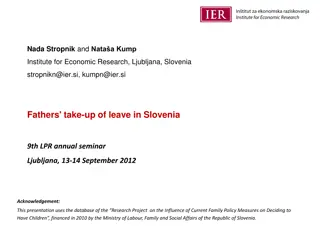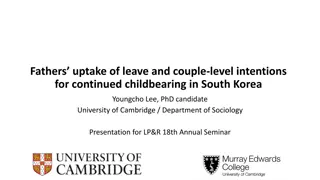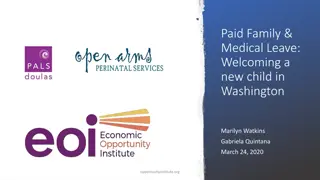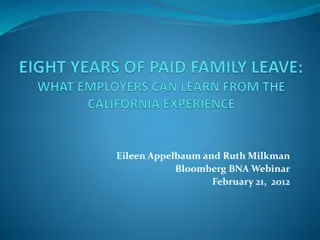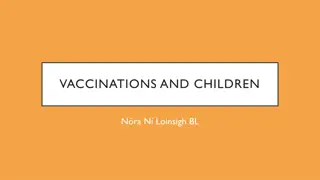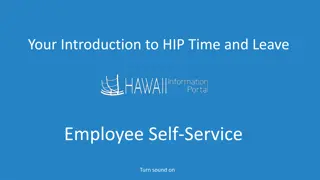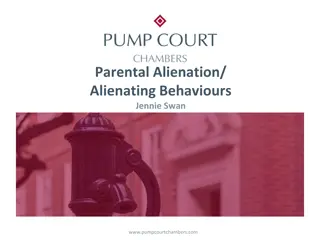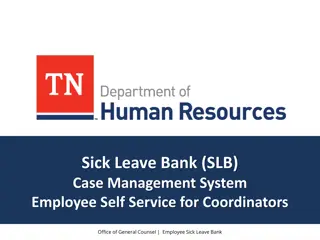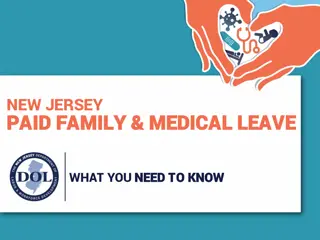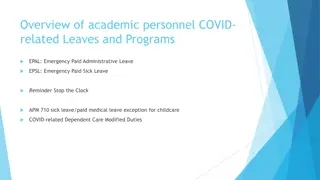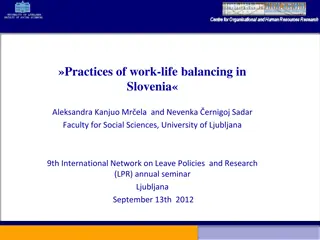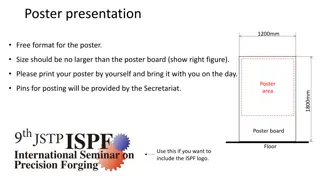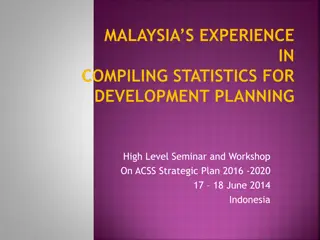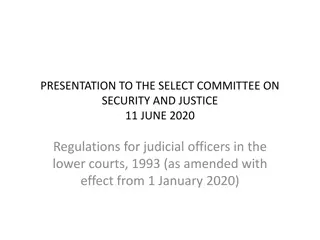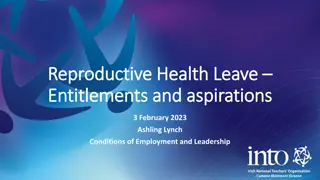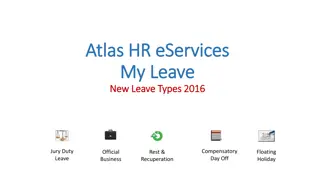Case for Paid Parental Leave at 11th LPR Network Seminar
Paid parental leave is vital for promoting gender equality and supporting working parents. The Norwegian parental leave scheme, spanning 1993-2014, highlights the evolution towards shared responsibilities. Eligibility criteria ensure dual earners benefit, aligning with Norwegian family policy ideals. Research questions explore the impact of paid leave on families while policy reforms show positive outcomes in time at home post-birth. Findings suggest increased time at home without income loss, minimal effects on children's outcomes, and some negative redistribution properties.
Download Presentation

Please find below an Image/Link to download the presentation.
The content on the website is provided AS IS for your information and personal use only. It may not be sold, licensed, or shared on other websites without obtaining consent from the author. Download presentation by click this link. If you encounter any issues during the download, it is possible that the publisher has removed the file from their server.
E N D
Presentation Transcript
What is the case for paid parental leave? 11thLPR Network seminar, Tallinn, 18-19 September 2014 Elin Kvande Department of Sociology and Political Science, Norwegian University of Technology and Science
Development of the Norwegian parental leave sceme 1993-2014. Number of weeks. Sharable part Father s quota Total number of weeks Mother s part Before birth 6weeks 39 weeks 4 weeks 1993: 52 3 6 39 2005: 53 5 3 6 39 2006: 54 6 3 6 37 2009: 56 10 3 6 36 2011: 57 12 3 2013: 59 14 28 14 3 3 2014: 59 10 36 10
Eligibilty : Both parents must have been in the working life for at least 6 of the last 10 months before birth of their child. 100 per cent of earnings 49 weeks or 80 per cent for 59 weeks ( euro 65,302) Supports: Dual earner and dual carer
General ideals in Norwegian family policies: Gender equality and Universialism Parental leave : 90 % of mothers eligible Fathers have the same rights Day care: From 2009 : all children have the right to day care from 12 months 2012: 70% of all 1 year olds 91% of all 2 year olds 97% of 3-5 year olds Maximum price
Research Questions. Does paid leave increase available parental leave time with children or does it simply crowd out unpaid leave? What effect does paid leave have on a broad range of child, parent and family outcomes? How do any benefits compare relative to costs? Are there progressive or regressive distributional effects?
Policy reforms 1987 to 1992 Paid parental leave expanded from 18 weeks to 35 weeks Use quasi-experimental design 3 months before and 3 months after compared for each expansion
Findings Each reform increases the amount of time spent at home versus work by roughly the amount of weeks allowed (Income replacement was 100% , the reforms caused an increase in mothers time spent at home after birth, without a reduction in family income) 2) The expansions had little effect on children s school outcomes, parental earnings and participation in the labor market (in short and long run) fertility, marriage and divorce 3) Paid maternity leave has negative redistribution properties
Quasi experimental studies Compare short time period before and after the introduction of a reform QES can as a rule only be applied to first persons who are effected QES can only identify parts of a total effect over time QES can only be applied to a certain context , no general conclusions
Marit Rnsen and Ragni Hege Kitter d Gender Ecualizing Family Policies and Mothers Entry into Paid Work; Recent Evidence From Norway. Feminist Economics , 2014 Panel data from period 1996-2010 Findings; Mothers enter work faster after childbirth in the late 2000s than a decade earlier More equal division of paid and unpaid work among parents
The fathers quota in Norway 1993-2013 http://magento.aschehoug.no/media/catalog/product/cache/4/cover/281x/17f82f742ffe127f42dca9de82fb58b1/8/2/8215001009_Brandth_mfl_3.jpg 2003 2013
Increased quota leads to increase in father s use of parental leave From 4 to 78 % during first five years Later continuous 90+ percent Everytime the quota has been increased (2005, 2006, 2009, 2011), the father s uptake has also increased Which means : More fathers taking longer parental leave Parents positive to the quota
Why does it work? Earmarked individual right Non- transferable to mothers No negotiations with mothers Collective right for all fathers It is a right for working fathers No negotiations with employers
http://gfx.nrk.no/z8XP25FWFfsVkrfmNGnkpQcILxx_DF_beXHU8V4rC3Tw.jpghttp://gfx.nrk.no/z8XP25FWFfsVkrfmNGnkpQcILxx_DF_beXHU8V4rC3Tw.jpg http://cdn2.vippy.co/10200/images/thumbnails/4f06ab672d2f9.jpg
